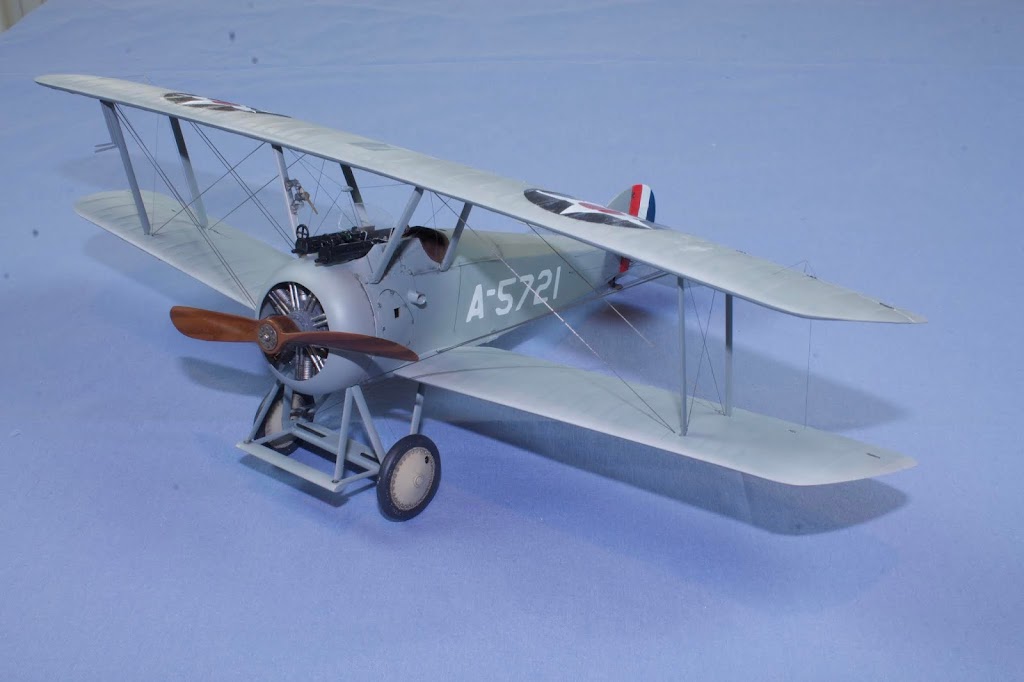Sopwith Camel, USS Texas, 1919
This was part of a group build in our local club, “1/28th Scale Revell Biplanes”. Most guys built theirs in a typical WWI scheme, but I had this subject on my bench in 1/72 so decided to scale up and be a bit different.
The Subject
When the war ended there where a huge number of surplus aircraft, both allied and German. Most were simply burned in place in Europe but a few were brought back for evaluation and the better ones used instead of the poorer allied aircraft in these roles.
This particular Camel was part of a group of 6 acquired by the US Navy to be used for evaluating aircraft use aboard battleships as scouts and for spotting the shots from battleships. Other aircraft were also evaluated, including Nieuports. Battleships were modified with flying off platforms over the turrets, with the ramps hinged and attached to the gun barrels. Aircraft were “launched” with gravity assistance and ditched next to the ships when the mission was completed. They were then hoisted back aboard.
The aircraft were modified with a hydroplane attached forward of the landing gear to aid in keeping the aircraft from nosing over when it ditched, and flotation gear under the lower wings to keep the aircraft afloat long enough to connect the hoisting gear.
These aircraft didn’t last long, and neither did the concept of using landplanes on battleships. Ditching a wooden and linen aircraft into the sea tends to deteriorate them quickly. After about a year, they were discarded and replaced (hey, lots of surplus aircraft still!). By 1922 the Navy was starting to fly floatplanes from battleships, these simply being the same fighter or observation types but with a single or double float underneath.
The Model
This is the 1957 issue of the kit, and to a 1/72nd scale modeler, this is a HUGE kit. However it has very few parts and most of the detail is on the outside. There are some details visible internally and these look nice, however they don’t appear accurate when compared to the restored Camel at the National Air & Space Museum. I decided not to correct these details, but I did add PE seatbelts from Copper State Models.
There were a huge number of mold release marks that I filled with a mixture of super glue and baby powder, then sanded smooth. There were also pre-drilled and oversized holes for the provided rigging thread that I filled because they were in the wrong locations and as noted, oversized. While at it, I drilled additional holes for the other rigging and control wires.
The hydroplane is simply styrene rod in airfoil shape I picked up in a variety pack for biplane interplane struts. Based on photos I built up the frame and attached it using regular glue. Once on it was surprisingly strong.
I cut a piece of clear acetate for the windscreen, turns out these Camels had multiple types of windscreens so I could pic and choose one that appeared easy to make. Control horns are PE from the same Copper State sheet as the seat belts. There were some additional parts I decided not to use, simply because they would not be visible.
For the rigging I used 3 different diameters of elastic thread. The thickest I used for the flying and landing wires and is EZ-Line thread. The other rigging wires are Uschi 0.005 diameter thread and the control wires are Uschi 0.003 diameter thread.
Summary
This was a fun build, and definitely a conversation starter. Most observers don’t realize it’s a Camel at first, because it’s not camoflaged in the typical PC-10 and linen colors.
Thanks for looking…





